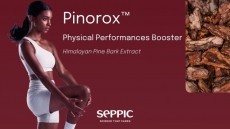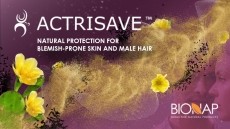Special edition: Polyphenols
Polyphenol use rises 69% in 5 years (but do people get it?)

The 69% figure is backed by a 38% rise in the use of the term 'antioxidants’ on food and drink products even if just in the ingredient listing over the same 5-year period, according to market analyst, Mintel.
Popular categories include biscuits and cookies (10.7% of launches between 2009 and 2013) followed by pastilles, gums, jellies and chews at 7.87% and cakes, pastries and sweet goods at 6.66%. Teas and fruit juices were also popular.
It is difficult to give overall market sizes because categorisation varies due to the manner in which the terms are used – is it a marketing feature or just a listed ingredient for instance?
Yet the broader polyphenols sector that sometimes goes by the name flavanols and includes compounds like proanthocyanidins, catechins, and theaflavins, faces major challenges.
The scientific data is strong, often compelling, but multifarious and inconclusive and polyphenols have not gained much regulatory backing which has not helped public understanding of their heart benefits and other health indications.
As Mintel global food and drink analyst Chris Brockman observed in a 2012 report about the antioxidants family which polyphenols belong to: “There is still scepticism in scientific circles about the health credentials of antioxidants. To gain trust, brands need to use those with specific benefits that have been backed up by clinical research.”
And where there is scientific scepticism, consumer scepticism or non-awareness often follows. Euromonitor International health and wellness analyst, Diana Cowland said: “I think many are aware of the word ‘polyphenol’ and hold the belief they are beneficial to health, but few have an idea of the biological function of the compound.”
“The more common thought will be that, ‘polyphenols are good for me’ but the more health conscious consumers will know they are good for the heart.”
Polyphenol claim paucity
Type the term ‘polyphenol’ into the European Union register of health claims and you’ll find just one approved claim – for a cholesterol-controlling olive oil extract called hydroxytyrosol. 19 others have been rejected including a host of berries, honey, cocoa, pomegranate, grape skin, red wine, fruits, tea, apple and French maritime bark.
Worse, because the EU deems ‘antioxidant’ to be an implied health claim, polyphenol can be viewed the same way but this is open to interpretation depending on the member state in question.
Consumer friendly?
That clampdown led Coca-Cola Europe’s functional ingredients manager, Michele Kellerhals, to tell a congress in Germany in 2010 that the use of ‘antioxidant’ as a marketing term would be replaced by polyphenols. “Industry will build the term polyphenols over time,” he noted, adding presciently, “The problem we all have now is how to translate what is happening into consumer-friendly messaging.”
That job may be bigger and take longer that most expected, especially as the research continues to deliver highly varied results.
Despite that, Brockman was positive: “The health benefits of antioxidant-rich nuts and berries have been supported by clinical research, making them attractive propositions for food brands.”
Cowland observed NPD was proceeding with a similar variety. “Polyphenols are coming up in some countries as a key functional ingredient in certain product groups. There is not a structured approach, though.”
For instance polyphenol-based functional confectionery slid from €42m to €18m between 2008 and 2013 in Japan, but grown from zero to €3.2m in South Korea over the same period, according to Mintel.
















